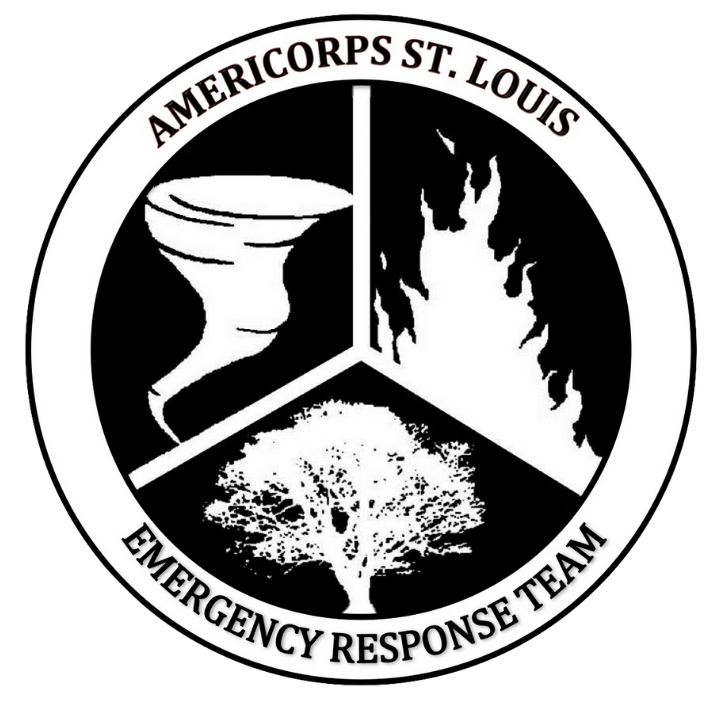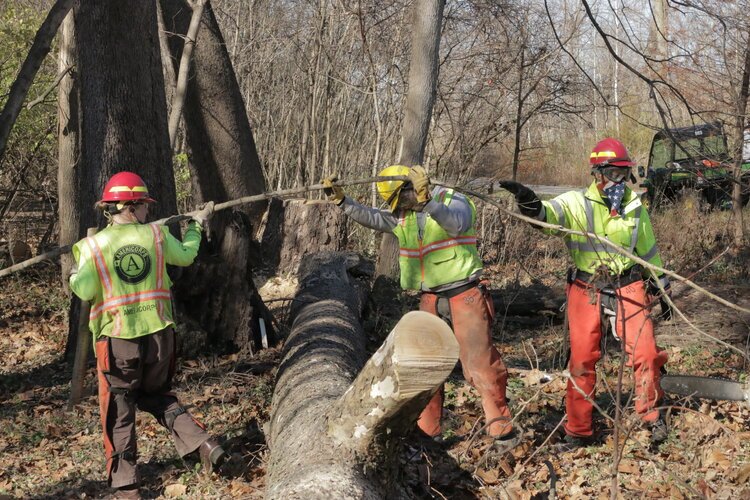Honeysuckle Removal Brings New Partnership
Article originally featured featured on the City of Maryland Heights website.
Why are we removing the Honeysuckle?
Similar to a sea of dandelions, bush honeysuckle are fast-growing weeds native of Asia. They grow quickly and create dense thickets that crowd out Missouri's native forest plants.
Amur and Bella honeysuckle (bush honeysuckle) were introduced to the United States in the mid to late 1800s for landscape ornamentals, wildlife cover and erosion control. Bush honeysuckle has the ability to easily establish itself and thrive in many different environments such as stream banks, meadows, prairies, and forests. It is currently rapidly spreading through forests all over the U.S. This invasive plant can be found from the east coast of Texas to as far northwest in Oregon and to as far east as Connecticut and Vermont. Recent research shows that this plant can outcompete neighboring plants for water with its root system. The majority of the roots are located within the top 5 inches of soil making it impossible for other plants to have a chance at survival. Invasive species will ultimately interrupt an otherwise healthy ecosystem, so removal is imperative.
What does Bush Honeysuckle look like?
Seedlings emerge in the spring and can quickly grow to the size of a small tree, about six feet high. The stems and branches are usually hollow, which is a way to distinguish from our native, non-invasive honeysuckle species which have solid stems. Unlike the native species that produce yellow flowers, the invasive honeysuckle produces white fragrant flowers from May to June. These flowers will turn light yellow as they age. In early fall, these plants produce red berries, which are consumed by birds and deer thus further spreading the weed.
Maryland Heights' Removal Efforts
Throughout 2020, Maryland Heights' Parks Maintenance Division, led by Superintendent of Parks, Charlie Milligan, researched and developed a plan to remove invasive honeysuckle from within the City parks and facilities. They were able to remove approximately 6 acres of honeysuckle with the assistance of the Public Works Department and AmeriCorps. AmeriCorps is a voluntary civil society program where members commit to a full or part-time position offered by a variety of organizations or public agencies. The team members are able to fulfill assignments in different fields ranging from public safety, environmental protection, health care and education. It's often viewed as a domestic version of the Peace Corps.
"The AmeriCorps team was great to work with," says Parks Superintendent Charlie Milligan. "They had a positive outlook and we look forward to working with them again." One of the most noticeable areas of work completed was the creek bed at the entrance to Vago Park. Bush Honeysuckle removal efforts will continue throughout 2021 with hopes of including community education and outreach.

